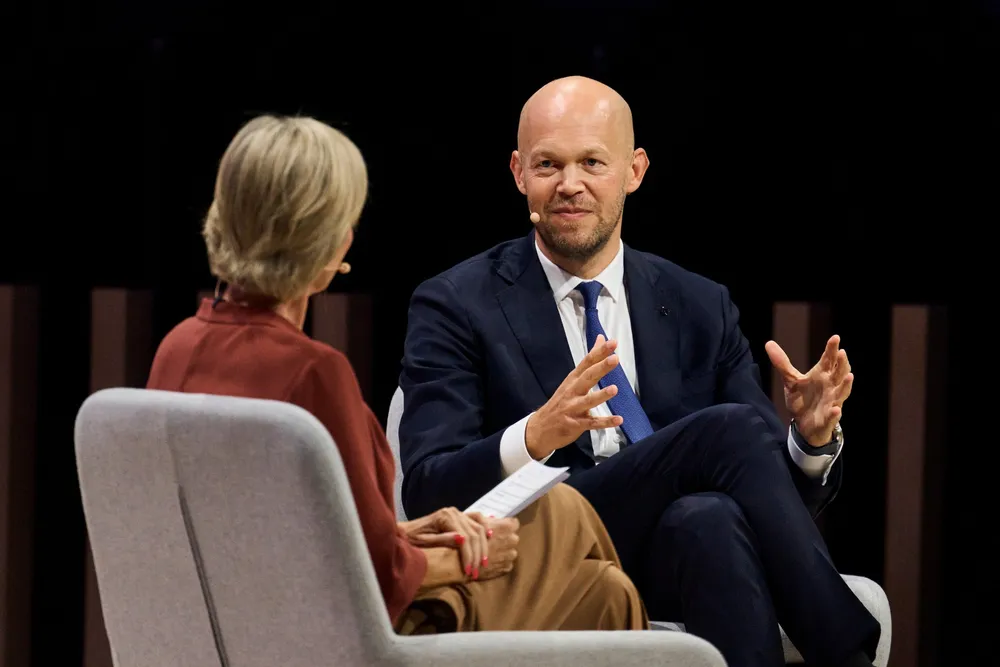How much will Orsted gain from axing 2,000 jobs? Less than you’d think
Cutting quarter of workforce will only save Orsted 2% of total revenue, according to its own accounts – and expose offshore wind giant to ‘brain drain’

Is Orsted finally moving in the right direction after a tumultuous ten months since Donald Trump’s return to the White House? One can put forward at least three arguments for both sides.
- The Danish wind giant's share issue was oversubscribed, and the immediate capital need is secured.
- The company is, despite all the negative headlines, profitable.
- Rasmus Errboe is doing what many new CEOs do: cutting costs.
- Has a healthy company ever announced it will cut a quarter of its staff?
- Orsted does not have any solid construction pipeline beyond 2027.
- A company that’s cutting so many jobs will not be able to control who leaves: a lot of top talent will be poached by competitors. ‘Brain drain’ seems inevitable.
While revenue has fallen significantly at Orsted over the last four years, the workforce grew by more than 2,000 from 2021 to 2023. In the 18 months since then, the company has cut around 700 positions.
This does speed up the downsizing, and it does leave questions as to how the company will fulfil its obligations and be able to grow.
In the first six months this year, employee costs were 11% of total running costs, and 8% of total turnover.
If we assume that a quarter of the workforce at Orsted leaves, and they are on an average salary, the downsizing will save the equivalent of 2% of Orsted’s total revenue – or around DKr1.5bn.
Errboe must probably do more to achieve a DKr2bn cut, the number that’s bandied about.
If we compare with the electricity production division of Iberdrola, Orsted has significantly higher staff costs. Iberdrola’s staff costs for power production were just over 4% in the first six months of this year.
Despite this, Orsted’s earnings before interest and taxes (EBIT) was 26.5% versus 20% for Iberdrola’s power production. Earnings before interest, taxes, depreciation and amortization (EBITDA) was also significantly better at Orsted compared to Iberdrola’s power division in the first half of this year.
‘Only sensible path’: Clarkson
According to an analysis by Clarkson Securities on Friday, the cuts are the only sensible path forward for Orsted, given the anticipated period of lower construction activity once current wind farm projects are completed.
The long-term issue for Orsted is that there are few new projects on the horizon. Unless they win new tenders, there might be little project activity for the next five to seven years.
Projects such as Hornsea 4 and Baltica 3 have received approvals but are currently shelved, with any revival requiring substantial investment and likely a farm-down partner. The earliest possible revival for the 2.4GW Hornsea 4 project would be in the UK government's 2027 renewables auction, with construction and completion several years later.
Brain drain is a risk
Another analysis, by Denmark's Sydbank, recommends that shareholders keep their Orsted shares, following the announcement of the job losses.
However, it warns the company does run the risk of brain drain, with key employees leaving for pastures new rather than sticking around in the gloom.
Sydbank also highlights the lack of new projects. If the company’s finances improve in two to three years’ time, corresponding with the job cuts, they will need to make further investments to create new growth.
Orsted shares do not appear expensive if all goes well, but it is too early to factor this in, according to Jacob Pedersen, head of equity research at Sydbank.
The adaptation to a new low-growth reality after 2027 is complex, and both political and operational risks remain high.
Will Orsted sell its US assets?
In the US, Orsted must expect their top talent to be headhunted by competitors. Employees may grow weary of an atmosphere of day-to-day crises and uncertainty.
The rights issue buys time, but Orsted is a relatively small company competing against much larger ones in offshore and onshore wind, two capital-intensive sectors. On top of that, the solar sector is rife with challenges, and Orsted is at a disadvantage versus NextEra and other heavyweights.
In the end, the savings from the job cuts may make Orsted marginally more profitable, but how significant is it compared to the project development capital required if Orsted aspires to remain a big player in renewable energy?
It is quite possible that Orsted will have to raise more cash long-term. Struggling companies often turn to asset sales or co-ownership. Which the analysts also point to: we might see Orsted finding partners for their projects.
At the same time, we have a US market where both domestic and foreign capital are looking for quality wind and solar operating assets. Projects with weighted lives of 10 years or more on their offtake contracts are especially of interest.
Given a strong forecast US demand, this could be a good opportunity for Orsted to sell onshore wind or solar assets, given their rising valuations. The same goes for certain wind or solar projects under construction, that are free from Trump’s permitting roadblocks. The M&A deal flow in these segments seems to remain robust.
One thing is certain: all eyes will be on Errboe and Orsted for the next few months, especially come 5 November, when the third quarter results will be presented.
(Copyright)